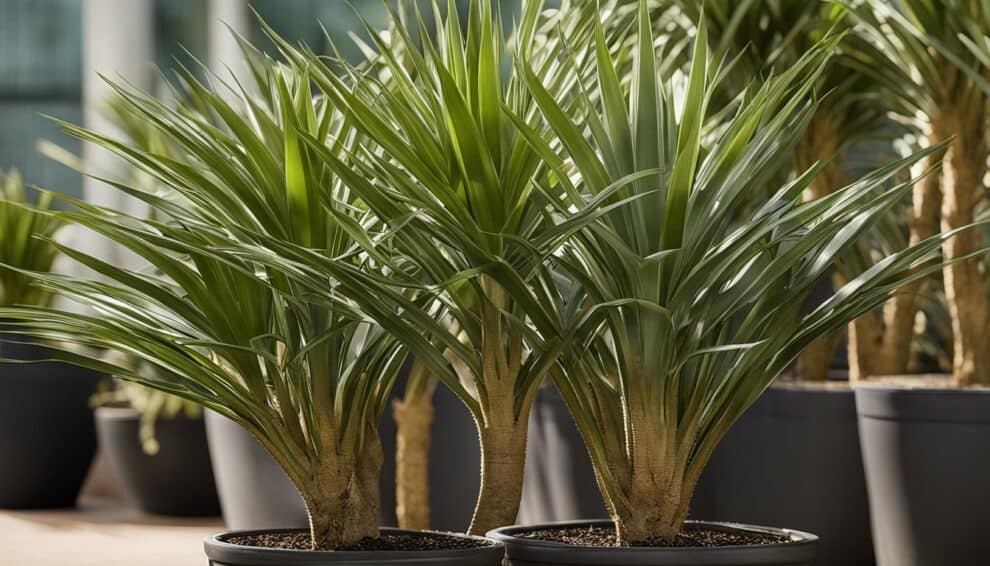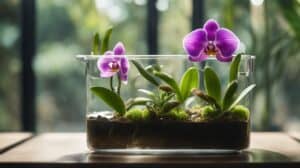Dragon trees are popular indoor and outdoor plants known for their unique appearance and ease of care.
Dracaena Draco and Marginata are two of the most common species of dragon trees, and they can be propagated in a variety of ways.
Whether you’re a seasoned gardener or a beginner, learning how to propagate dragon trees can be a fun and rewarding experience.

Propagation is the process of creating new plants from existing ones, and it’s a great way to expand your collection of dragon trees.
There are several methods of propagation, including stem cuttings, air layering, and seed germination.
Each method has its own advantages and disadvantages, and the best one for you will depend on your experience level and the resources you have available.
With a little patience and some basic knowledge, anyone can successfully propagate dragon trees.
Understanding Dragon Trees
Species Overview
Dragon trees, also known as Dracaena, are a group of plants that belong to the Asparagaceae family.
There are over 120 species of Dracaena, but the two most popular species are Dracaena draco and Dracaena marginata.
Dracaena draco, also called the Canary Island dragon tree, is native to the Canary Islands and Morocco.
It can grow up to 30 feet tall and has a thick, gray trunk with branches that resemble an umbrella.
The leaves of Dracaena draco are green, sword-shaped, and can grow up to 2 feet long.
Dracaena marginata, also known as the Madagascar dragon tree, is native to Madagascar and Mauritius.
It is a slow-growing plant that can reach up to 15 feet tall.
The trunk of Dracaena marginata is thin and woody, and it has long, narrow leaves that are green with red edges.
Cultural Significance
Dragon trees have been highly valued by many cultures for their ornamental and medicinal properties.
In ancient Egypt, the resin of Dracaena was used for embalming and as a perfume.
In traditional Chinese medicine, the leaves and stems of Dracaena were used to treat various ailments, including coughs, headaches, and constipation.
In addition to their medicinal properties, dragon trees are also popular as ornamental plants.
They are often used as indoor plants and are prized for their attractive foliage and easy-to-care-for nature.
Dragon trees are also used in landscaping and can be found in parks, gardens, and public spaces around the world.
Whether you are a seasoned gardener or a beginner, dragon trees are a great addition to any collection.
With their unique characteristics and cultural significance, they are sure to bring beauty and interest to any space.
Propagation Techniques

Dragon trees are easy to propagate, and there are three main techniques for propagating them: seed propagation, cuttings propagation, and air layering method.
Seed Propagation
Seed propagation is the most common method of propagating dragon trees. The seeds of the Dracaena Draco and Marginata can be obtained from mature plants.
The seeds should be planted in a well-draining soil mix and kept moist until they germinate.
The seeds take about two to three weeks to germinate, and once they have germinated, they should be kept in a bright, warm location.
Cuttings Propagation
Cuttings propagation is another easy way to propagate dragon trees. Cuttings should be taken from healthy, mature plants during the growing season.
The cuttings should be about 6 inches long and should be taken from the tip of the stem.
The cuttings should be allowed to dry for a few days before planting them in a well-draining soil mix.
The cuttings should be kept moist until they have rooted, which can take up to two to three weeks.
Air Layering Method
The air layering method is a more advanced technique for propagating dragon trees.
This method involves cutting a small section of the stem and then wrapping it in moist sphagnum moss.
The moss should be kept moist until roots have formed, which can take up to six months.
Once roots have formed, the stem can be cut off and planted in a well-draining soil mix.
Overall, dragon trees are easy to propagate, and each of these methods has its advantages and disadvantages.
It’s essential to choose the method that works best for your needs and experience level.
Growing Conditions

Light Requirements
Dragon trees require bright, indirect light to thrive.
Direct sunlight can scorch their leaves, so it’s best to place them near a window with a sheer curtain or in a partially shaded area.
If the plant is not receiving enough light, its leaves may turn yellow and fall off.
Soil Preferences
Dracaena Draco and Marginata prefer well-draining soil that is slightly acidic.
A mixture of peat moss, perlite, and sand can be used to create a suitable soil medium.
It’s important to avoid overwatering, as this can lead to root rot.
Watering Schedule
Dragon trees should be watered when the top inch of soil feels dry to the touch.
It’s important to avoid letting the soil dry out completely or become waterlogged.
During the winter months, the plant may require less frequent watering.
Overall, providing the right growing conditions is key to the success of Dragon Tree Propagation.
By following these tips for light, soil, and watering, gardeners can ensure that their plants thrive and grow to their full potential.
Care and Maintenance

Fertilizing
Dragon trees require regular fertilization to maintain healthy growth.
During the growing season, from spring to fall, it is recommended to fertilize the plant every two weeks with a balanced liquid fertilizer.
During the winter months, reduce the frequency to once a month.
Be sure to follow the instructions on the fertilizer packaging and avoid over-fertilizing, which can lead to burned roots and leaves.
Pruning
Pruning is an essential part of dragon tree care. Regular pruning helps to maintain the plant’s shape and promote new growth.
It is recommended to prune the plant in the spring and summer months.
Use clean, sharp pruning shears to remove any dead or damaged leaves, as well as any crowded or crossing branches.
Be sure to disinfect the pruning shears between cuts to prevent the spread of disease.
Pest and Disease Management
Dragon trees are generally resistant to pests and diseases, but they can still be affected by common problems such as spider mites, mealybugs, and scale insects.
To prevent infestations, regularly inspect the plant for signs of pests and remove any affected leaves or branches.
Use an insecticidal soap or neem oil to treat infestations.
In terms of diseases, dragon trees can be susceptible to root rot if overwatered or planted in poorly draining soil.
To prevent root rot, ensure the plant is planted in well-draining soil and avoid overwatering.
If root rot does occur, remove the affected plant parts and repot the plant in fresh soil.
Frequently Asked Questions

What is the best method to propagate a Dracaena Marginata?
The best way to propagate a Dracaena Marginata is by stem cuttings. Cut a stem from the mother plant that is at least 6 inches long and has a few leaves.
Remove the lower leaves and dip the cut end in rooting hormone powder.
Plant the stem in a well-draining, moist potting mix and keep it in a warm, bright spot with indirect sunlight.
Can you root Dracaena Draco cuttings in water?
No, it is not recommended to root Dracaena Draco cuttings in water.
These plants are sensitive to root rot and water propagation can increase the risk of fungal diseases.
It is best to propagate them in a well-draining potting mix.
What are the soil requirements for propagating Dragon Trees?
Dragon Trees prefer a well-draining, slightly acidic soil mix.
A mix of peat moss, perlite, and sand can provide the ideal conditions for successful propagation.
How can I encourage faster growth in my Dracaena Marginata?
To encourage faster growth in your Dracaena Marginata, provide it with bright, indirect sunlight and keep the soil moist but not waterlogged.
Fertilize it with a balanced fertilizer every two weeks during the growing season.
Is it possible to propagate a Dragon Tree from just the top cutting?
No, it is not possible to propagate a Dragon Tree from just the top cutting.
The stem needs to have at least a few leaves and be at least 6 inches long to successfully propagate.
What care tips ensure successful Dracaena propagation?
To ensure successful Dracaena propagation, keep the soil moist but not waterlogged, provide bright, indirect sunlight, and protect the plant from cold drafts.
Fertilize it every two weeks during the growing season with a balanced fertilizer and avoid overwatering to prevent root rot.













